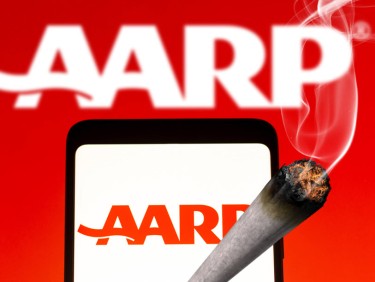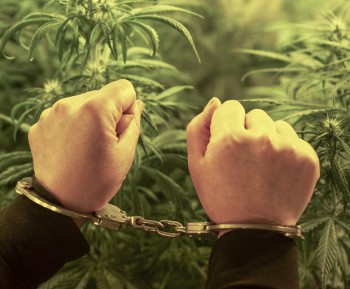
Marijuana usage among older persons in the United States has nearly quadrupled over the past three years, according to a new research supported by AARP. Numerous users claim benefiting from cannabis use in pain management, sleep enhancement, mental health enhancement, and other areas.
More than one in five Americans 50 years of age and older reported using marijuana at least once in the previous year, according to a University of Michigan poll. Over one-tenth said they used it on a monthly basis. According to research, the number of older persons using cannabis will continue to rise as more states legalize it.
Of those who had used marijuana in the previous year, 81% stated they did so to relax, 68% to assist sleep, and 64% because they loved the experience. Furthermore, 63% utilized cannabis for pain treatment, with 53% using it to improve their mental wellness.
According to the AARP, 21% of Americans over the age of 50 currently use marijuana, nearly double the 12% reported in the previous 2021 poll.
According to the most recent data, 12% reported using cannabis at least monthly, 9% weekly, and 5% daily.
The poll also discovered that those aged 50 to 64, those in poorer health, and those from lower-income families were more likely to consume cannabis on a regular basis. In Michigan, where adult cannabis usage became legal in December 2019, consumption rates were even higher: 27% reported using it in the previous year, 14% weekly, and 9% daily or almost daily.
The Michigan Poll on Healthy Aging, which surveyed 1,079 Michigan residents and 3,012 people from other states, focused specifically on THC-containing products. The report’s authors emphasize the importance of further cannabis education.
Motivations Behind Cannabis Use Among Older Adults: A Growing Trend
According to the survey, adults aged 50 and older are turning to cannabis for various reasons, including:
- Relaxation (81%)
- Help with sleep (68%)
- Enjoying the effects/feeling good (64%)
- Pain relief (63%)
- Mental health or mood support (53%)
- Treating a medical condition (40%)
- Enhancing social gatherings/connecting with others (31%)
- Celebrating (26%)
- Experimenting (18%)
"As cannabis becomes legal, more people are using it, but we don't yet have enough information to address crucial issues like, are there safe methods to consume it? Are there any suggested guidelines?" Bonar is a psychiatry professor at Michigan Medicine. "So, seeing these numbers rise without solid scientific data to guide people's decisions is a bit concerning."
The AARP-funded study concentrated on cannabis products containing THC, the psychoactive component that produces the "high." This varies from CBD products, which are popular among older folks but contain just minimal quantities of THC.
Among regular cannabis users—those consuming at least monthly—56% said they had discussed their cannabis use with a healthcare provider, and nearly 79% believed that today’s marijuana is stronger than in previous decades.
However, Bonar pointed out that this means 21% of older adults might not realize THC levels have increased since the 1990s. She also noted that while 72% of people believe cannabis can be addictive, over a quarter remain skeptical.
The poll's lead researcher, Jeffrey Kullgren, an internal medicine professor at the University of Michigan and a doctor at the Veterans Affairs Ann Arbor Healthcare System, emphasized the significance of addressing cannabis usage with healthcare practitioners. He noted that these discussions can aid in detecting potential medication interactions or symptoms of problematic use.
Cannabis as a Rising Alternative to Alcohol: Impact on Consumer Choices
According to a Bloomberg report earlier this month, the continued legalization of cannabis poses a "significant threat" to the alcohol industry as more people choose to use it instead of alcohol. The report predicted that this could "indefinitely" prolong the decline in wine and spirits sales.
In a research published late last year, a global investment bank mirrored these views, claiming that marijuana had developed into a “formidable competitor” with alcohol. Over the following five years, they predicted that the number of regular cannabis users will increase by roughly 20 million, while the number of alcohol users may decline by a few million. According to the research, as additional states legalize marijuana, sales of the drug might reach $37 billion in the United States by 2027.
Another research from Canada, where marijuana is allowed on a federal level, indicated a correlation between legalization and a decline in beer sales, suggesting that cannabis and alcohol are substituting for one another.
These results are consistent with recent polls regarding Americans' perceptions of marijuana in relation to alcohol. According to a Gallup poll conducted last month, people believe cannabis to be less dangerous than nicotine-containing vape pens, alcohol, and tobacco. In addition, adult cannabis users have surpassed cigarette users in number.
According to a different survey conducted in June of last year by the American Psychiatric Association (APA) and Morning Consult, Americans view marijuana as much less harmful than alcohol, cigarettes, and opioids, and they also think it's less addictive than technology.
A different survey conducted in July found that more Americans use marijuana daily than consume alcohol. Additionally, compared to cannabis users, alcohol users are more likely to think that cutting back on their usage would be beneficial.
Comparably, a May research that appeared in the journal *Addiction* discovered that more American adults now use marijuana on a regular basis than do people who use alcohol.
Bottom Line
According to a new AARP research, marijuana usage among older Americans has nearly quadrupled in the last three years, with more than 21% of persons aged 50 and over currently smoking cannabis. Key benefits include pain reduction, sleep help, relaxation, and mental health support. As additional states legalize marijuana, this tendency is projected to continue, particularly among individuals aged 50 to 64. Furthermore, cannabis is widely perceived as an alternative to alcohol, with many users preferring it to drinking, potentially impacting alcohol sales. With marijuana becoming more socially acceptable, healthcare practitioners and regulators must address the absence of clear rules for safe usage, especially as cannabis products become stronger and more readily available.







